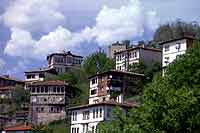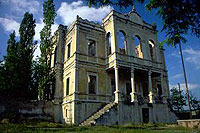Safranbolu
 Safranbolu is a town boasting a glorious collection of old Ottoman houses, with a rich collection of pieces of art which represents traditional Turkish life and culture. Its rich history and success in preserving it earned the town an inclusion on the UNESCO World Heritage List.
Safranbolu is a town boasting a glorious collection of old Ottoman houses, with a rich collection of pieces of art which represents traditional Turkish life and culture. Its rich history and success in preserving it earned the town an inclusion on the UNESCO World Heritage List.
The best known for its old Turkish houses, the town is attracting more attention especially as these 19th century homes are gradually disappearing from other areas of Türkiye. Visitors enjoying walking along the old narrow cobbled streets, and seeing some of the traditional crafts and trades that are still practised today. It is also known as the Capital City of Preservation, acknowledging its ability to hold onto not only pieces of art, but also the atmosphere.
Climate

The climate in Safranbolu is a combination of the Black Sea and Central Anatolia. The summers are hot, winters are cold, spring and autumn are tepid and cool and very long.
History
 Previously known as Paphlagonia, Safranbolu took its name from saffron and has hosted many different civilisations in its history including Romans, Byzantines, Seljuks and Ottomans. It was conquered by the Turks in 1196.
Previously known as Paphlagonia, Safranbolu took its name from saffron and has hosted many different civilisations in its history including Romans, Byzantines, Seljuks and Ottomans. It was conquered by the Turks in 1196.
The town reached its economic and cultural peak during the Ottoman Empire, partly because its position as an important stop on the Istanbul to Sinop trade route in the 17th century improved the commerce and wealth of the region. During this period it had close relations with Istanbul and Kastamonu, and state officials from the Ottoman Palace had important pieces of art in Safranbolu. The wealthy inhabitants of the town built large houses made from wood and stucco, many of which still survive. During the 19th century nearly 25% of the population were Ottoman Greeks, who left after World War I.